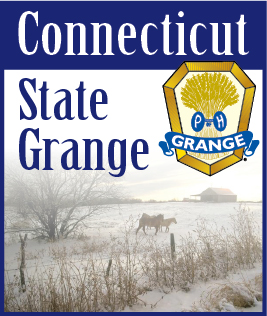| MARCH 19, 2011 -- Back in the 19th century, the pioneers of Broomfield, Colorado, lived tough, isolated lives on individual farms and ranches. When they stepped outside, they saw rolling plains and sky instead of homes and shopping centers. If anything could be considered a “town center,” it was the area around today’s 120th Avenue and Olde Wadsworth Avenue where the train depot was located.
Forty years after the first Europeans settled in the area, fifteen families banded together to form the Crescent Grange Number 136. Although it was a great way to battle the loneliness of farm life, the Grange was far more than a social club. It was a forum for sharing knowledge and techniques about farming and also served as a farm lobby.
Like farmers across the country, Broomfielders depended on banks for financing and the trains to move fruit of their labor into the city markets. Not surprisingly, the banks and railroads aimed for the highest prices they could get for these services. Independently, the farmers had no bargaining power, but negotiating as the Grange, they had some clout.
The Grange was not a local invention. The National Grange of the Order of Patrons of Husbandry was formed shortly after the Civil War. The word “grange” comes from the Latin “granarium,” or granary. At its peak, the National Grange boasted over a million members nationwide, representing the needs of the nation’s farmers. It can claim credit for the creation of the Cooperative Extension Service (an educational organization for farmers that developed groups like the 4-H Club), Rural Free Delivery (free mail delivery in rural areas), and the Farm Credit System (a nation-wide coop of banks and associations that provide loans to farmers).
The local Broomfield organization, called the Crescent Grange, was one of 42 Colorado granges and first met in 1898 in Mary Wright’s cheese factory. The first “grand master” was Broomfield pioneer, H. H. Graves, a railroad agent and informal retailer of merchandise, a business he reportedly operated out of his home. In 1916, the Crescent Grange built its own meeting hall, a building that still stands at 7901 120th Avenue in the old section of Broomfield.
The Granges were notable for being one of the first organizations in the country to welcome women as members. An unusually progressive idea at the time, it was based on the consensus that women worked just as hard as men on a farm. A photograph of the Crescent Grange drill team from 1917 shows that nearly half the members were women.
Broomfield pioneer, Frances Cron, wrote in her diary in 1910 about learning to waltz at a grange dance on New Year’s Eve. She also wrote about attending plays put on by the Grange. The Grange obviously played a major role in making life a bit more liveable in those rough early years.
|
